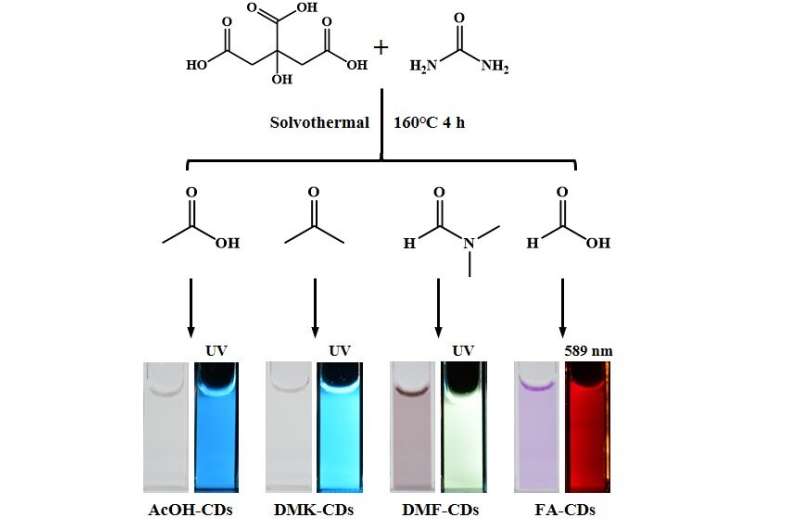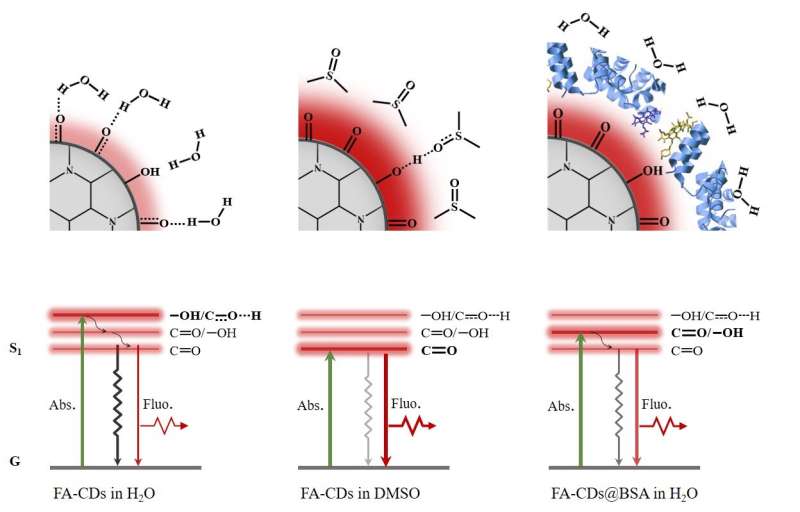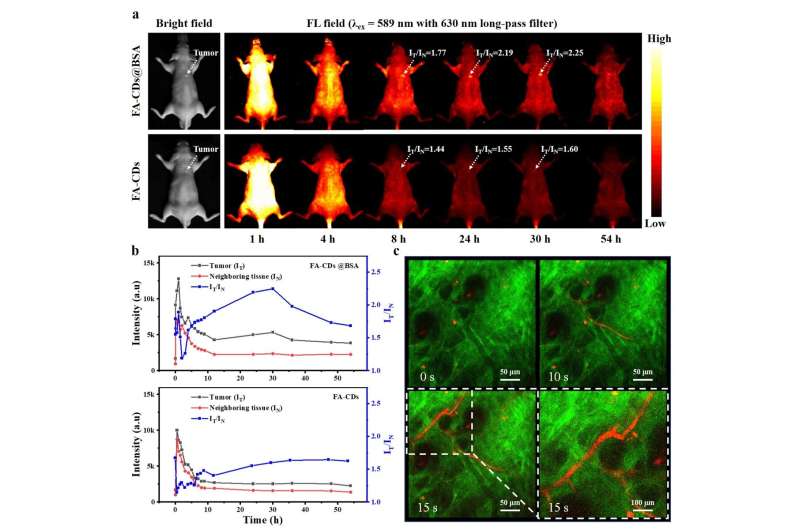Credit: Huiqi Zhang, Gang Wang, Zhiming Zhang, Josh Haipeng Lei, Tzu-Ming Liu, Guichuan Xing, Chu-Xia Deng, Zikang Tang, and Songnan Qu
Carbon dots (CDs) are a kind of zero-dimensional carbonaceous nanomaterial. Due to their ultra-small size (usually less than 10 nm), simple synthesis, low toxicity, well-documented biocompatibility, and outstanding luminescent properties, CDs have wide applications, particularly in bioimaging and biomedical fields. Until now, efficient blue and green emissions with photoluminescence quantum yield (PLQY) higher than 60% have been reported in several CDs systems, while efficient pure red emissive CDs are still scarce. Noninvasive in vivo fluorescence (FL) imaging calls for an ideal working spectral window in red to NIR range of 650‒1450 nm. Therefore, CDs with strong emissions in red to NIR region in aqueous solutions are highly desired.
In a new paper published in Light Science & Application, a team of scientists, led by Professor Songnan Qu from Joint Key Laboratory of the Ministry of Education, Institute of Applied Physics and Materials Engineering, University of Macau, Taipa, Macau SAR, China, and co-workers have developed one step solvothermal synthesis of red emissive FA-CDs from citric acid and urea in FA without complicated purification procedures.
By comparing the optical properties and chemical structures of the solvothermal synthesized samples in different solvents, the high content of electron-withdrawing C=O groups and low content of proton-donating −NH and −OH groups on the surface of FA-CDs account for their pure red emission. After composing with BSA, high PLQY up to 21.9% and significantly enhanced multi-photon red FL were realized in FA-CDs@BSA aqueous solutions. Both FA-CDs and FA-CDs@BSA exhibited very low cytotoxicity and were renally excreted in vivo. More importantly, clearly in vivo red FL tumor imaging and two-photon red FL imaging of mouse ear vessels were realized via intravenous injection of FA-CDs@BSA aqueous solutions.
Credit: Huiqi Zhang, Gang Wang, Zhiming Zhang, Josh Haipeng Lei, Tzu-Ming Liu, Guichuan Xing, Chu-Xia Deng, Zikang Tang, and Songnan Qu
"To our best knowledge, this is the first time realizing two-photon FL imaging in mammals in vivo based on CDs. We prospect this study can promote the rational design of low-cost strong red/NIR emissive CDs in aqueous system for their high performance biological applications," the scientists said.
Credit: Huiqi Zhang, Gang Wang, Zhiming Zhang, Josh Haipeng Lei, Tzu-Ming Liu, Guichuan Xing, Chu-Xia Deng, Zikang Tang, and Songnan Qu
More information: Huiqi Zhang et al, One step synthesis of efficient red emissive carbon dots and their bovine serum albumin composites with enhanced multi-photon fluorescence for in vivo bioimaging, Light: Science & Applications (2022). DOI: 10.1038/s41377-022-00798-5
Journal information: Light: Science & Applications
Provided by Chinese Academy of Sciences


























